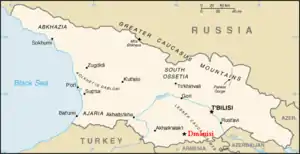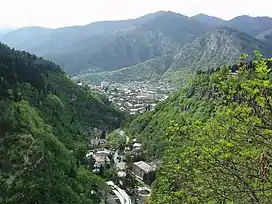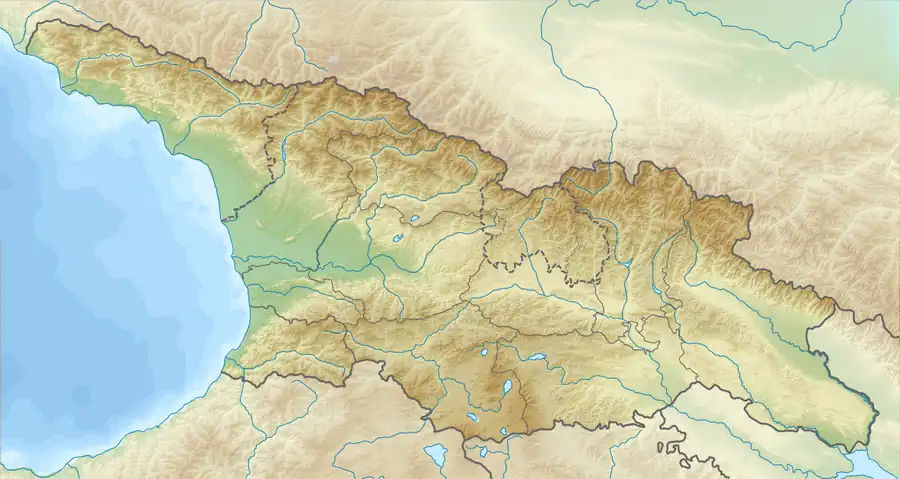Borjomi Gorge
Borjomi Gorge (Georgian: ბორჯომის ხეობა) is a picturesque canyon of the Kura River in central Georgia. The gorge was formed as a result of the Kura River cutting its path through the Lesser Caucasus Mountains where the Trialeti and Meskheti Ranges meet. A significant portion of the Borjomi Gorge is covered by mixed and coniferous forests made up of oak, maple, beech, spruce, fir, and pine. A large portion of the Borjomi-Kharagauli National Park lies within the gorge, as well as the towns of Likani and Borjomi itself.[1] Baku–Tbilisi–Ceyhan pipeline cuts through the portion of the gorge.[2]

| Borjomi Gorge | |
|---|---|
 | |
 Borjomi Gorge  Borjomi Gorge | |
| Naming | |
| Native name | ბორჯომის ხეობა (Georgian) |
| Geography | |
| Country | |
| State/Province | Samtskhe-Javakheti |
| Population center | Likani and Borjomi |
| Coordinates | 41°50′53″N 43°24′36″E |
| River | Kura River |
History
Older books call it the Borzhom or Borjom Defile. About the time of the Russo-Turkish War (1828–29) it was militarily important since it was the natural route southwest through the mountains from Russian-controlled Georgia to the Turkish Pashalik of Akhaltsikhe. It was guarded by a fort or castle called Atskhur.
References
- About Sights – Borjomi Aerial Tramway Georgia About
- "Giant Caspian oil pipeline opens". BBC News. 2005-05-25. Retrieved 2007-12-30.